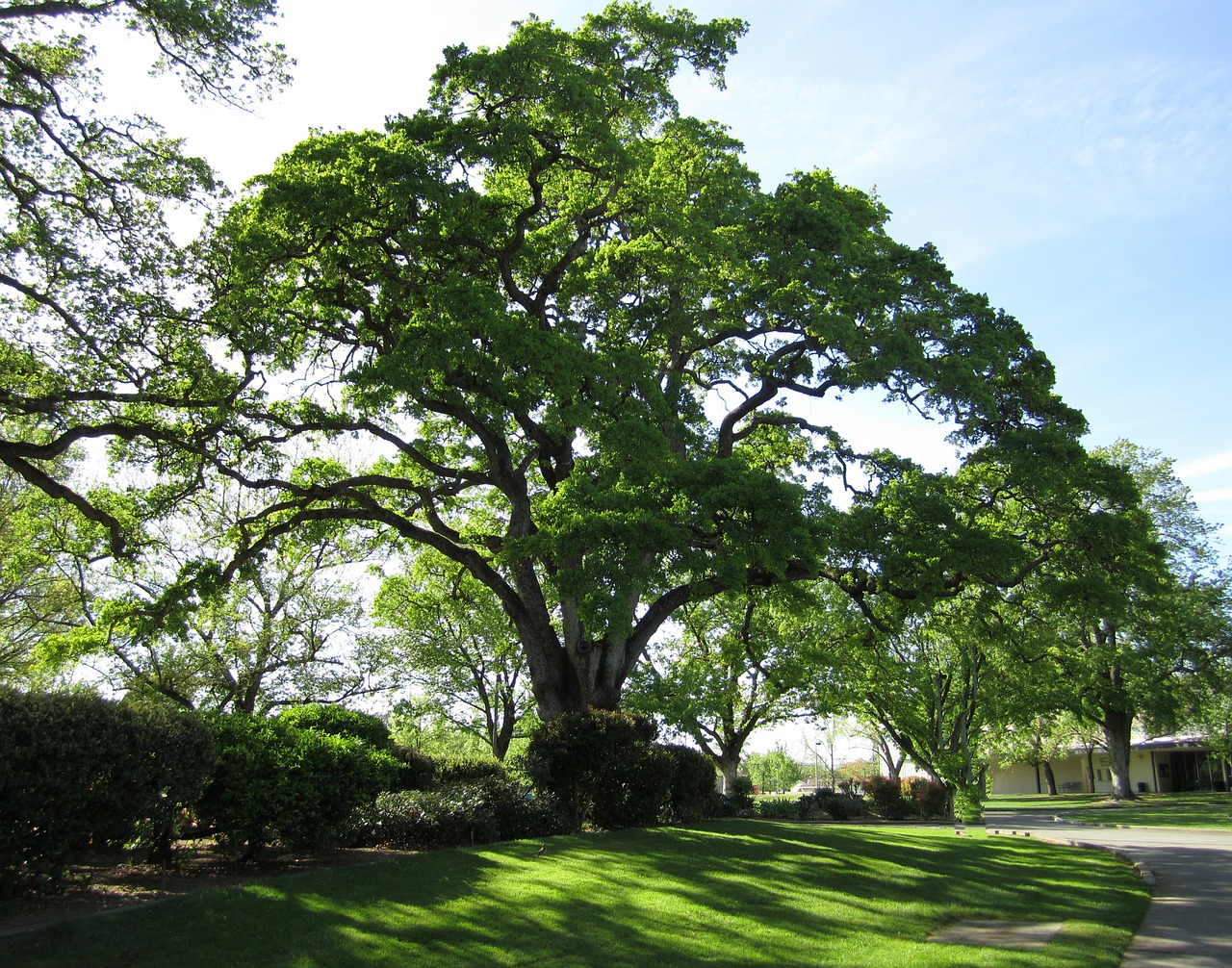
In sunny Jacksonville, planting shade trees in your yard is a great idea. Aside from boosting your curb appeal with their beauty, they’ll also help keep your property cool during the oppressively hot summers.So what are the best shade trees to plant in Jacksonville?
Strategically planted shade trees can cool your home and reduce your electricity bills, especially when placed in the right spots. If you’re looking for great shade trees, keep in mind that not all trees – even some Florida natives – will do well in the River City.
Jacksonville falls between USDA Hardiness Zones 8B and 9A, so keep an eye out for trees that thrive within those zones.
1. Crape Myrtle (Lagerstroemia species)
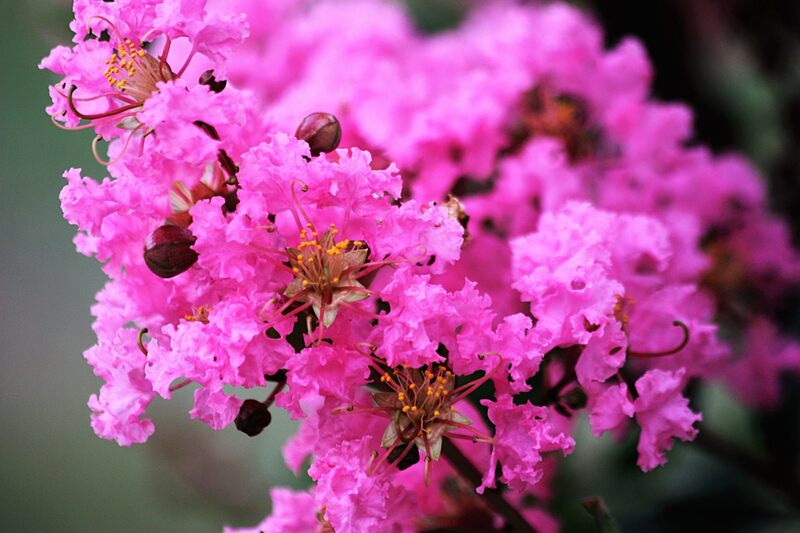
Called the “lilac of the South”, crape myrtles are flowering trees that bloom well into summer after most other trees have stopped. Their flowers are thin – quite like crepe paper – and come in white, pink, crimson, or even deep purple. In fact, some regions call this a crepe myrtle tree.
In the fall, crape myrtles grace your property with their yellow, orange, and red leaves. Even in winter, they look beautiful with their mottled bark.
The crape myrtle is a great shade tree not just for its beauty but also for its low maintenance. It’s quite drought-tolerant and doesn’t need much pruning at all.
Larry Figart, an urban forestry extension agent with the University of Florida Institute of Food and Agricultural Sciences (UF/IFAS), even cautions against excessive pruning of the top of the tree, as it delays flowering and causes weird growth. Instead, consider the tree’s mature height when picking a cultivar.
- Hardiness Zones: Most cultivars thrive in zones 7 – 10
- Sun: Full sun
- Water Needs: Drought-tolerant, but needs more water when younger
- Soil Type: Grows in most soil types, but neutral or slightly acidic is best. Avoid wet soils.
- Pruning: Little pruning is required. Excessive pruning is detrimental.
- Lifespan: 50+ years
- Mature Height: 5 to 30 feet
- Spread: 6 to 15 feet
2. East Palatka Holly (Ilex x attenuata ‘East Palatka’)
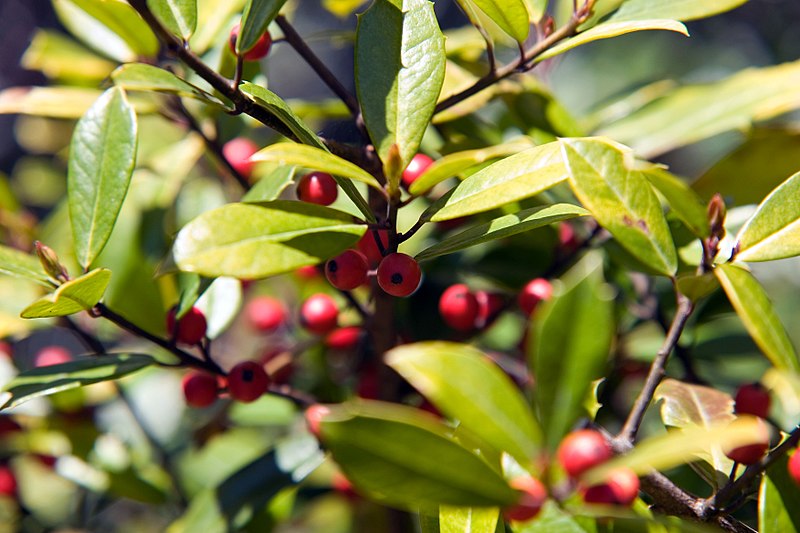
The East Palatka holly is a less traditional choice for a shade tree, but it’s a solid one. These native hybrid trees can be used as shade trees, hedges, or even privacy screens.
The East Palatka holly is evergreen, with stiff green leaves and red berries. East Palatka holly will be a striking feature of your lawn in the winter.
Its berries will attract birds that love to eat them, but don’t try them yourself. The berries are poisonous to people and pets, so keep your kids and furry friends away.
- Hardiness Zones: 7A – 9B
- Sun: Can do well in full sun or full shade, but it will grow more berries in full sun
- Water Needs: Drought-tolerant, but needs more water when first planted. Water often if you want new growth.
- Soil Type: Rich, slightly acidic, well-draining soil. It tolerates salty soils well.
- Pruning: Little pruning is required. Prune if you want a wider crown.
- Lifespan: 40+ years
- Mature Height: 30 to 45 feet
- Spread: 10 to 15 feet
3. Winged Elm (Ulmus alata)
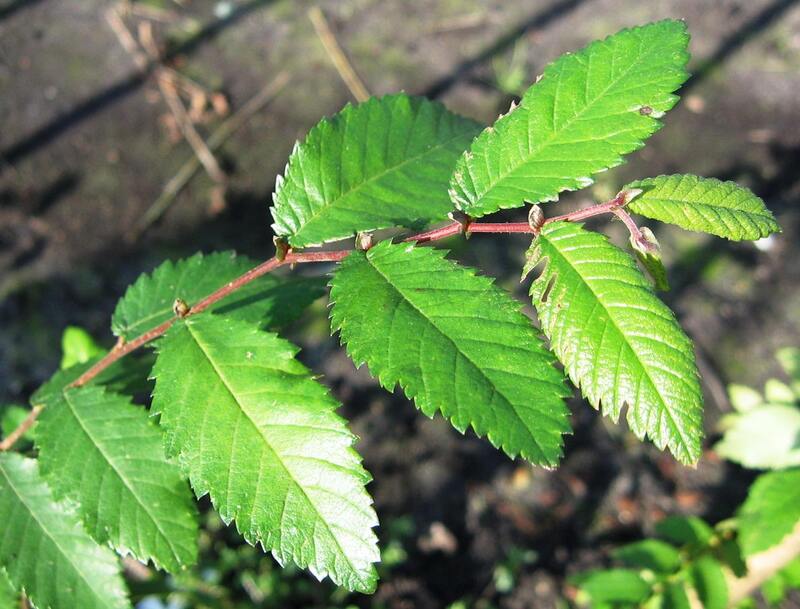
This tree is a Florida native, so it’s well-suited for Florida landscapes. The winged elm gets its name from the corky projections on its branches, and its round crown is shaped like a vase.
The winged elm is a robust tree that’s low maintenance. However, it does need regular pruning for its first 30 years of life. This will prevent multiple trunks and give its branches a cohesive structure.
- Hardiness Zones: 6A – 9B
- Sun: Full sun or full shade
- Water Needs: Very drought-tolerant but appreciates regular watering
- Soil Type: Survives in all soil types
- Pruning: Needs regular pruning
- Lifespan: Less than 100 years
- Mature Height: 45 to 70 feet
- Spread: 30 to 40 feet
4. Hophornbeam (Ostrya virginiana)
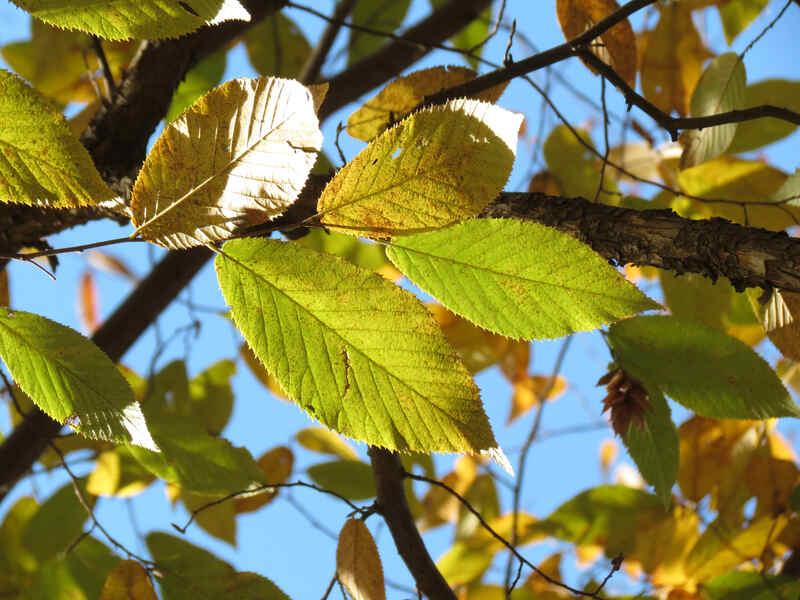
The American hophornbeam is not a well-known tree, but its smaller size makes it perfect for smaller lawns.
The American hophornbeam has a rounded crown and interesting bark but a shallow root system. It produces nutlets that attract many types of wildlife, such as birds. In the fall, its leaves turn golden.
A point in favor of the hophornbeam is that it’s a plant-and-forget tree with low maintenance requirements. It will survive in all sorts of conditions.
- Hardiness Zones: 3A – 9A
- Sun: Full sun or full shade
- Water Needs: Very drought-tolerant
- Soil Type: Survives in all soil types
- Pruning: Needs little pruning
- Lifespan: 100 to 150 years
- Mature Height: 30 to 40 feet
- Spread: 25 to 30 feet
5. Southern Magnolia (Magnolia grandiflora)
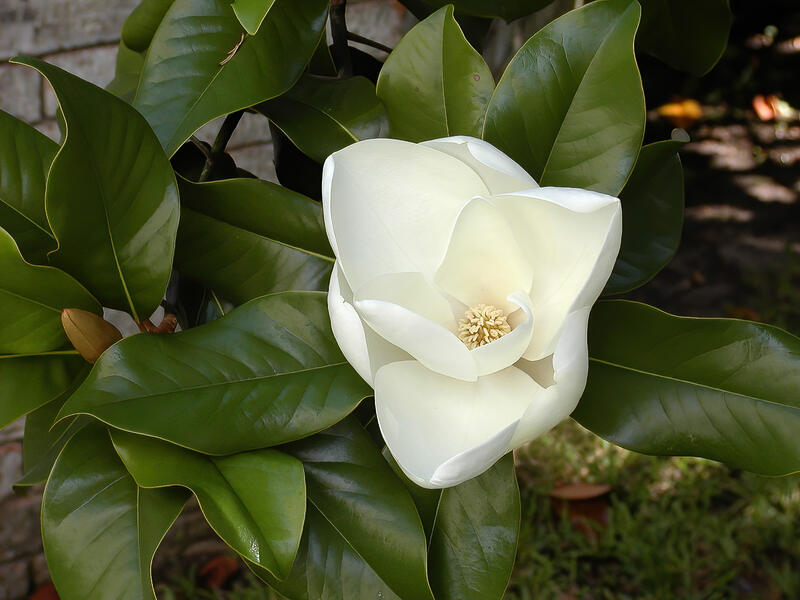
The Southern magnolia is yet another iconic tree from the South. This evergreen tree blossoms from May to June, gracing your property with its large and fragrant white flowers.
The Southern magnolia’s large leaves are green and glossy, but they drop all year round. You’ll need to clean up your yard more often if you choose to plant this beauty.
There are other downsides to the majestic Southern magnolia. While it’s a sturdy, wind-resistant tree, its roots are shallow and spread far and wide. They can lift sidewalks and driveways. And while it’s an excellent shade tree, it’s a little too good at its job; grass will have a hard time growing under its shade.
- Hardiness Zones: 7A – 10A
- Sun: Full sun to partial shade
- Water Needs: Moderately drought-tolerant, but it likes periodic watering
- Soil Type: Avoid alkaline soils
- Pruning: Very little pruning needed
- Lifespan: 80 to 120 years
- Mature Height: 60 to 80 feet
- Spread: 30 to 40 feet
Note: If you’re looking for a smaller and less messy magnolia tree alternative, consider the sweetbay magnolia (Magnolia virginiana). Its leaves don’t drop, and it can live in more environments than its larger cousin. However, it’s less drought-tolerant.
6. Southern Live Oak (Quercus virginiana)
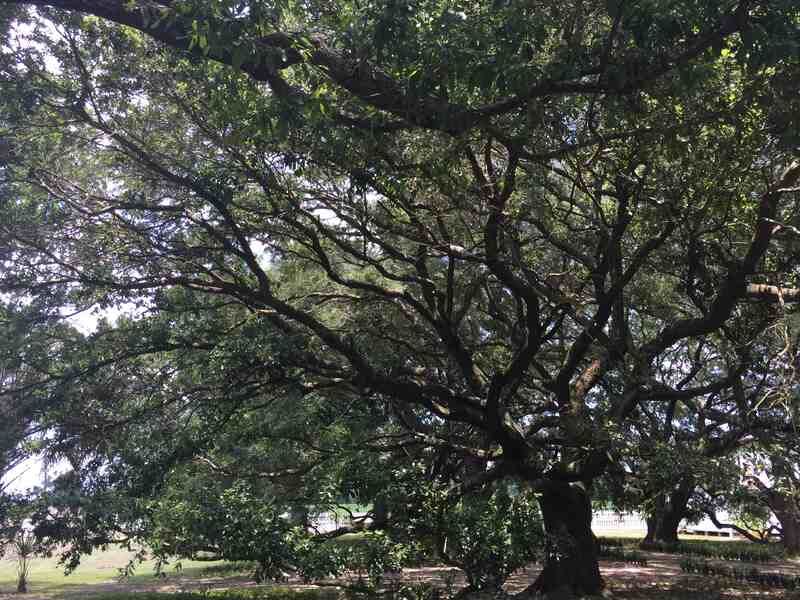
The majestic southern live oak is another icon of the Old South. While it grows slowly, it will grow tall and wide, so it’s a perfect shade tree for larger properties.
This large tree is sturdy, long-lived, and nearly evergreen. Although it’s a deciduous tree, its leaves will fall only after new leaves have arrived in the spring. Just make sure not to plant an oak too close to any buildings!
In Jacksonville, a southern live oak is a strong contender for the oldest living thing in the city. The Treaty Oak is estimated to be around 250 years old and is older than The River City itself!
- Hardiness Zones: 7B – 10B
- Sun: Full sun to partial shade
- Water Needs: Drought-tolerant but will grow vigorously when watered
- Soil Type: Tolerates most soils but thrives in moist, acidic loamy, clay, or sandy soil
- Pruning: Required for good structure. Prune yearly in its first years (age 1-3), then every five years until about age 30.
- Lifespan: 150+ years. Some live oaks have lived for more than 1,000 years!
- Mature Height: 60 to 80 feet
- Spread: 30 to 120 feet
FAQ About the Best Trees to Plant in Your Jacksonville Yard
There are some other native tree options for you to choose from. Here are some of them:
Red maple (Acer rubrum): Gives Jacksonville its beautiful fall colors
River birch (Betula nigra): Fast growing, moderately drought-tolerant, but can trigger allergens for some people
Sweetbay magnolia, a less messy alternative to traditional magnolias
The flowering dogwood is a popular tree, and rightfully so; its beautiful blooms historically signaled the arrival of spring in certain areas of the nation, including North Florida and Northeast Florida.
However, flowering dogwoods are quite difficult to nurture, especially with warming temperatures and powdery mildew. If you decide to plant one in your Jax yard, keep it in partial shade.
While trees have many benefits, they’re not perfect additions to your yard. They come with their own weaknesses and problems. Read our article about the pros and cons of having trees in your yard to find out more.
Generally, trees that grow too fast tend to have weak wood, making them less likely to withstand strong winds. There are also a few that are just messy or flat-out stinky. You can read our article on the worst trees to plant in Jacksonville to find out more.
How To Beau-tree-fy Your Jacksonville Yard
Trees make for wonderful additions to your home, especially because they offer both beauty and utility. However, it’s best if you plant trees suited to your area’s conditions.
So, if you live in Jacksonville, consider choosing these trees. You can plant them yourself or hire a landscaper to plant them for you. LawnStarter can connect you with a Jacksonville landscaping specialist today.